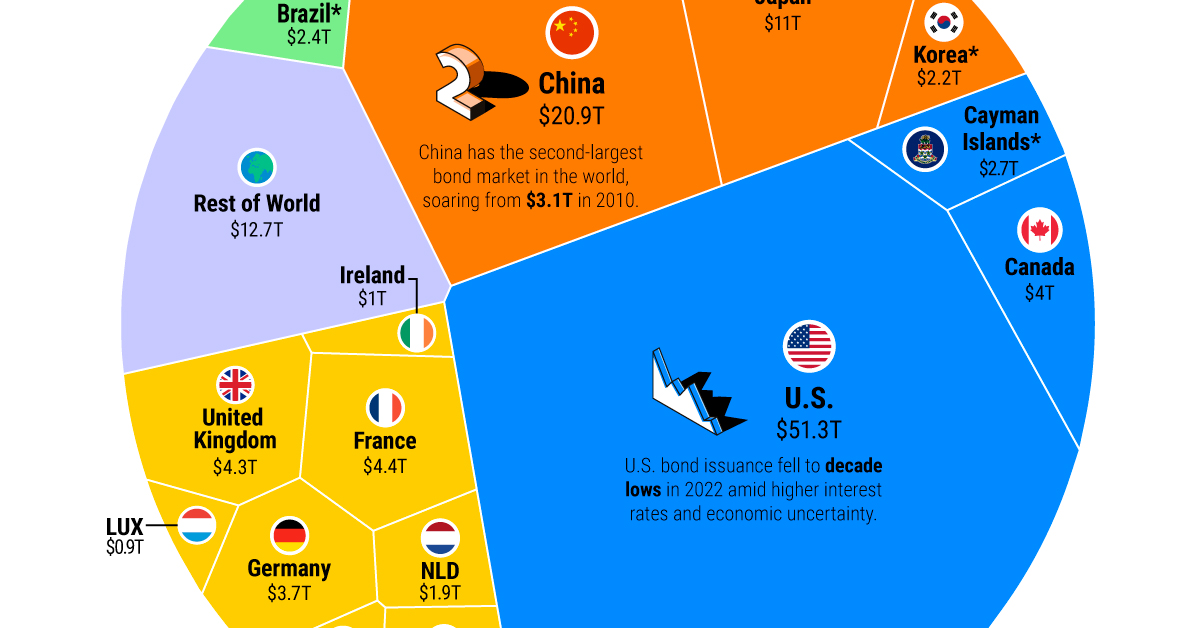

Finance
What Is Covered Bonds
Published: October 12, 2023
Discover the financial benefits of covered bonds and how they play a crucial role in the world of finance. Learn what covered bonds are and how they can support your financial goals.
(Many of the links in this article redirect to a specific reviewed product. Your purchase of these products through affiliate links helps to generate commission for LiveWell, at no extra cost. Learn more)
Table of Contents
Introduction
Welcome to our comprehensive guide to covered bonds. In the world of finance, covered bonds play a significant role as a financing option for banks and a secure investment choice for institutional and individual investors. Understanding the concept and mechanics behind covered bonds is essential for anyone involved in the financial industry or seeking to diversify their investment portfolio.
Covered bonds are a unique type of debt instrument that offers dual protection to investors. They are backed by a specific pool of high-quality assets, such as residential mortgages or public sector loans, also known as the cover pool. Additionally, covered bonds benefit from the creditworthiness of the issuing bank. This combination of collateral and the issuer’s financial strength sets covered bonds apart from other debt securities.
The primary objective of covered bonds is to provide banks with an additional source of funding and liquidity while offering investors a safe and reliable investment. Unlike other bond types, covered bonds remain on the issuer’s balance sheet, providing a higher level of security and mitigating risks for investors.
As we delve deeper into the world of covered bonds, we will explore their purpose, key features, types, regulatory framework, as well as their issuers and investors. Additionally, we will analyze the current market trends and provide insights into the future outlook for covered bonds.
Whether you are a financial professional searching for new investment opportunities or a curious individual looking to expand your knowledge of finance, this article will serve as a comprehensive resource to understand the intricacies and advantages of covered bonds.
Definition of Covered Bonds
Covered bonds are debt securities issued by financial institutions, typically banks, that are backed by a dedicated pool of high-quality assets known as the cover pool. These assets, which can include residential mortgages, public sector loans, or other types of secured loans, provide additional security to bondholders.
What distinguishes covered bonds from other types of bonds is the dual recourse feature. In the event of default by the issuer, investors have two avenues for repayment. Firstly, they have a claim on the cover pool, which consists of the specified assets that serve as collateral for the bonds. Secondly, they have recourse to the issuing bank, leveraging its creditworthiness to fulfill the obligations of the bonds.
Unlike securitized assets, where the underlying assets are transferred to a special purpose vehicle, the cover pool for covered bonds remains on the issuer’s balance sheet. This means that the issuing bank retains ownership and control over the underlying assets, providing an additional layer of security for investors in the event of default.
Covered bonds are typically structured as fixed-rate bonds with maturities ranging from a few years to several decades. They offer regular coupon payments, usually on a quarterly or semi-annual basis, and the principal is repaid upon maturity.
The issuing bank is responsible for maintaining the quality of the cover pool and ensuring that it meets specific eligibility criteria, such as loan-to-value ratios and loan types. This oversight, combined with regulatory requirements, helps to protect the interests of bondholders.
Covered bonds are subject to specific legal frameworks and regulations, which vary by jurisdiction. These regulations are designed to provide a standardized framework for issuing covered bonds and establish safeguards to protect investors.
Overall, covered bonds offer a combination of attractive features for both issuers and investors. They provide banks with a cost-effective source of funding by tapping into the capital market, while offering investors a low-risk investment option backed by high-quality assets and the creditworthiness of the issuing bank.
Purpose and Benefits of Covered Bonds
Covered bonds serve several purposes and offer numerous benefits for both issuers and investors. Let’s explore the key motivations behind the issuance of covered bonds and the advantages they provide.
1. Funding Diversification: One of the primary reasons banks issue covered bonds is to diversify their funding sources. By accessing the capital markets, banks can reduce their reliance on traditional funding channels, such as deposits, and tap into a broader investor base. This diversification helps banks manage their funding needs more efficiently and enhances their overall financial stability.
2. Cost-Effective Financing: Covered bonds typically offer lower funding costs for banks compared to other debt instruments. The high-quality collateral in the cover pool provides an additional layer of security, reducing the risk perceived by investors. This increased security allows banks to issue covered bonds at lower interest rates, resulting in cost savings for the issuing institution.
3. Liquidity Management: Covered bonds provide an effective tool for banks to manage their liquidity needs. By issuing covered bonds, banks can convert illiquid assets, such as long-term mortgages, into liquid securities that can be easily sold in the secondary market. This ability to transform illiquid assets into readily tradable instruments improves the liquidity position of banks and enhances their ability to meet short-term obligations.
4. Investor Protection: The dual recourse feature of covered bonds provides a high level of protection for investors. In the event of default, investors have a claim on the cover pool assets, which act as collateral. Additionally, they can rely on the creditworthiness of the issuing bank to fulfill the obligations of the bonds. This combination of collateral and issuer support makes covered bonds a low-risk investment option, attracting risk-averse investors seeking stable and secure securities.
5. Stable Investment Returns: Covered bonds offer stable and predictable investment returns. They typically pay fixed-rate coupons on a regular basis, providing a steady income stream for investors. This stability makes covered bonds particularly attractive to income-oriented investors, such as pension funds, insurance companies, and individual investors seeking reliable cash flows.
6. Regulatory Compliance: Covered bonds are subject to specific regulatory frameworks in various jurisdictions. These regulations aim to ensure the safety and transparency of covered bonds by establishing minimum standards for cover pool composition, reporting requirements, and investor protection measures. This regulatory oversight enhances the credibility of covered bonds and provides investors with confidence in the quality and integrity of these securities.
7. Diversification for Investors: For investors, covered bonds offer diversification benefits within their investment portfolios. The underlying assets in the cover pool, such as mortgages or public sector loans, provide exposure to different sectors of the economy and help reduce concentration risk. Additionally, covered bonds offer a lower correlation with other asset classes, enhancing portfolio diversification.
In summary, covered bonds serve the purpose of diversifying funding sources for banks, providing cost-effective financing, managing liquidity, and offering a secure investment option for investors. The advantages of covered bonds include investor protection, stable returns, regulatory compliance, and portfolio diversification. These benefits have contributed to the popularity and growth of covered bonds in the global financial markets.
Key Features of Covered Bonds
Covered bonds possess several distinctive features that set them apart from other debt securities. Understanding these key features is essential for investors and issuers alike. Let’s explore the key characteristics of covered bonds:
- Dual Recourse: Covered bonds provide bondholders with dual recourse, meaning that investors have two avenues for repayment in the event of default by the issuing bank. They can rely on the assets in the cover pool as well as the creditworthiness of the issuing bank.
- Collateralized Security: Covered bonds are backed by a dedicated pool of high-quality assets, known as the cover pool. These assets, which can include residential mortgages, public sector loans, or other secured loans, act as a form of collateral and provide an additional layer of security for bondholders.
- On-Balance Sheet: Unlike other securitized assets, covered bonds remain on the issuer’s balance sheet. This means that the issuing bank retains ownership and control over the underlying assets in the cover pool, offering investors an increased level of security in the event of default.
- Transparent Structure: Covered bond issuances follow a transparent structure, with clear guidelines on the composition of the cover pool, reporting requirements, and investor protection measures. This transparency enhances the credibility and reliability of covered bonds, providing transparency for investors and regulators.
- Regular Interest Payments: Covered bonds typically offer fixed-rate coupons, paid regularly to bondholders. These fixed interest payments provide a predictable income stream for investors, making covered bonds an attractive option for those seeking stable returns.
- Maturity: Covered bonds have various maturity periods, ranging from a few years to several decades. The maturity of the bonds determines the repayment timeline, with the principal amount being repaid to bondholders upon maturity.
- Regulatory Oversight: Covered bonds are subject to specific legal and regulatory frameworks, which vary by jurisdiction. These regulations establish standards for the issuance and ongoing management of covered bonds, ensuring compliance with investor protection measures and enhancing the overall safety and transparency of the market.
- Investor Base: Covered bonds attract a diverse investor base, including institutional investors such as pension funds, insurance companies, and asset managers, as well as individual investors seeking secure investment options. The risk-averse nature of covered bonds, coupled with their stable returns, makes them particularly appealing to income-oriented investors.
The combination of these key features makes covered bonds an attractive financial instrument for both issuers and investors. The dual recourse feature provides security to bondholders, while the backing of a specific pool of assets offers additional protection. The transparency and regulatory oversight surrounding covered bonds instill trust in the market, making them a reliable investment choice. Overall, the unique features of covered bonds contribute to their popularity and widespread use in the global financial industry.
Types of Covered Bonds
There are several types of covered bonds, each with its own unique characteristics and features. These variations allow issuers to tailor their offerings to specific investor preferences and market conditions. Let’s explore some of the commonly found types of covered bonds:
- Plain Vanilla Covered Bonds: These are the most common type of covered bonds, characterized by their standard features and structures. Plain vanilla covered bonds have fixed interest rates, regular coupon payments, and defined maturities. They provide investors with a straightforward investment option backed by a specific cover pool.
- Conditional Pass-Through (CPT) Covered Bonds: CPT covered bonds offer investors additional protection by incorporating dynamic collateral management techniques. In the event of a default or early amortization, excess cash flows from the cover pool are used to repay bondholders, ensuring timely payment of interest and principal. This feature enhances the credit quality of the bonds and provides an extra layer of security.
- Soft Bullet Covered Bonds: Soft bullet covered bonds have a feature that enables the issuer to extend the maturity date of the bonds under certain conditions. This flexibility allows the issuer to manage their funding needs and provides investors with potentially longer investment periods. Soft bullet covered bonds often come with a call option, allowing the issuer the right to redeem the bonds before the maturity date.
- Dual Currency Covered Bonds: Dual currency covered bonds offer investors the choice to receive interest payments and principal in a currency other than the base currency of the bond. This feature allows investors to mitigate currency risk and tailor their investments to their preferred currency exposure.
- Tap Issuances: Tap issuances are a type of covered bond where the issuer has the option to sell additional bonds with the same characteristics as the original issuance. This allows the issuer to take advantage of favorable market conditions and investor demand without the need for a new issuance process. Tap issuances provide flexibility and convenience to both issuers and investors.
- Green Covered Bonds: With a growing focus on sustainability, green covered bonds have emerged as a specialized type of covered bonds. These bonds are issued to finance environmentally friendly projects or assets that meet specific green criteria. Green covered bonds provide investors with an opportunity to support sustainable initiatives while benefiting from the security and stability of covered bonds.
It’s important to note that the availability and characteristics of different types of covered bonds may vary depending on the regulatory frameworks and market practices of each jurisdiction. Issuers have the flexibility to design covered bonds that cater to the preferences and demands of investors, creating a diverse range of options in the market.
By offering various types of covered bonds, issuers can cater to different investor needs and market conditions, enhancing the appeal and flexibility of covered bond investments. Investors can choose from a wide range of options based on their risk tolerance, investment objectives, and desired features.
Regulatory and Legal Framework for Covered Bonds
Covered bonds operate within a well-defined regulatory and legal framework in order to ensure their integrity, transparency, and investor protection. The specific regulations and legal requirements surrounding covered bonds vary across jurisdictions, but they generally serve to standardize the issuance process and establish safeguards for bondholders. Let’s explore some of the key aspects of the regulatory and legal framework for covered bonds:
- Legislation and Regulations: Many countries have specific legislation in place that governs the issuance and operation of covered bonds. These laws define the legal framework and prescribe the requirements for the cover pool, asset eligibility, investor protection, and reporting obligations.
- Asset Eligibility Criteria: Regulatory frameworks typically outline the specific requirements for the assets that can be included in the cover pool. These criteria may vary, but commonly include factors such as loan-to-value ratios, credit quality, and geographical diversification. The aim is to ensure that the assets backing the covered bonds are of high quality and provide sufficient collateral to protect bondholders.
- Issuer and Investor Protection: The regulatory framework places a strong emphasis on protecting the interests of both issuers and investors. Regulations often require issuers to meet specific capital adequacy and liquidity requirements to safeguard their ability to fulfill their obligations. Investor protection measures may include regular reporting on the cover pool, disclosure requirements, and transparency obligations to ensure that investors have access to accurate and timely information.
- Overcollateralization and Asset Encumbrance: Some jurisdictions require overcollateralization, which means that the value of the cover pool assets must exceed the value of the covered bonds outstanding. This overcollateralization provides an additional cushion to protect investors in case of default. Additionally, regulations may impose limits on the level of asset encumbrance, ensuring that the cover pool assets can be relied upon in the event of default by the issuer.
- Regulatory Supervision: Covered bond issuances are often subject to regulatory oversight by central banks, financial authorities, or other regulatory bodies. These entities monitor compliance with the regulatory framework, conduct regular audits, and ensure that the interests of bondholders are adequately protected. Regulatory supervision helps maintain market integrity, transparency, and investor confidence.
- Cross-Border Issuances: In the case of cross-border covered bond issuances, legal and regulatory considerations are further complicated, as they involve multiple jurisdictions. Harmonization efforts and collaboration among regulators aim to establish frameworks that facilitate cross-border transactions, ensuring consistency and clarity for issuers and investors operating across different legal jurisdictions.
It is important for issuers and investors to familiarize themselves with the specific regulatory and legal requirements within their respective jurisdictions. This will help ensure compliance and enable market participants to make well-informed decisions when considering covered bond investments.
Overall, the regulatory and legal framework for covered bonds aims to promote market stability, investor protection, and transparency. By establishing clear guidelines and standards, these frameworks contribute to the credibility and reliability of covered bonds as a secure and attractive investment option in the global financial market.
Issuers and Investors of Covered Bonds
Covered bonds are issued by banks and other financial institutions seeking funding for their lending activities. These issuers benefit from the dual recourse feature of covered bonds, which allows them to tap into the capital markets with a relatively low-cost funding source. Let’s explore the key players involved in covered bond issuances and the types of investors attracted to these securities:
Issuers: Banks are the main issuers of covered bonds. These can be large commercial banks, savings banks, or mortgage banks. The decision to issue covered bonds is driven by their funding needs, liquidity management strategies, and the desire to diversify funding sources. Issuers are responsible for setting the terms and conditions of the covered bonds, maintaining the quality of the cover pool, and fulfilling their obligations to bondholders.
Investment Banks: Investment banks play a crucial role in the issuance process of covered bonds. They act as intermediaries between the issuer and the investors, assisting with structuring the bond offering, preparing the necessary legal documentation, and marketing the bonds to potential investors. Investment banks also provide advisory services and market insights to assist issuers in making informed decisions throughout the issuance process.
Institutional Investors: Institutional investors, such as pension funds, insurance companies, and asset managers, are significant participants in the covered bond market. These investors are attracted to the stable returns, low-risk nature, and credit-enhanced features of covered bonds. Institutional investors often have long-term investment horizons and are seeking reliable income streams, making covered bonds an appealing investment option.
Central Banks and Government Institutions: Central banks play a vital role in supporting the covered bond market through their monetary policies and involvement in secondary market activities. They may hold covered bonds as part of their reserve portfolios or use them as eligible collateral in their liquidity operations. Additionally, government institutions, such as pension funds or sovereign wealth funds, may also invest in covered bonds as a means to diversify their portfolios and generate stable returns.
Individual Investors: Individual investors, including retail investors and high net worth individuals, are attracted to covered bonds for their stability and security. Covered bonds offer a lower-risk investment opportunity, making them suitable for individual investors seeking capital preservation and predictable cash flows. Individual investors may access covered bonds through brokerage platforms, investment funds, or direct offerings from issuing banks.
Foreign Investors: Covered bonds have gained popularity among foreign investors seeking a safe and reliable investment option. This demand is driven by the perception of covered bonds as high-quality securities backed by the creditworthiness of the issuing bank and the specific cover pool assets. Foreign investors may include international banks, asset managers, and institutional investors searching for diversification in different markets and currencies.
The covered bond market brings together a diverse range of issuers and investors, offering benefits to both parties. Issuers gain access to a cost-effective funding source, while investors enjoy the stability and security of these credit-enhanced investment instruments.
It is worth noting that the covered bond market is subject to specific regulatory rules and guidelines that govern the activities of both issuers and investors, ensuring transparency, consistency, and protection for all stakeholders involved.
Market Trends and Outlook for Covered Bonds
The market for covered bonds has experienced significant growth over the years, driven by the appeal of their dual recourse structure and the strong demand for safe and reliable investment opportunities. Let’s delve into the current market trends and provide insights into the future outlook for covered bonds:
Increased Global Issuance: The covered bond market has witnessed a rise in global issuance, with more countries adopting covered bond legislation and regulations. This expansion is driven by the favorable funding conditions for banks and the increasing investor demand for secure and high-quality assets. As a result, new issuers are entering the market, further diversifying the pool of covered bond offerings.
Geographical Expansion: Covered bonds, once predominantly issued in Europe, are now becoming popular in other regions, including North America and Asia. Countries like the United States, Canada, and Australia have seen increased issuance activity, providing investors with opportunities in different markets and currencies. This geographical expansion opens up new investment avenues and enhances portfolio diversification.
Green Covered Bonds: The growing focus on sustainability has led to the emergence of green covered bonds. These bonds finance environmentally friendly projects and meet specific green criteria. Green covered bonds serve as an avenue for investors seeking both secure investments and the opportunity to support sustainable initiatives. This trend is expected to continue as environmental considerations take center stage in the financial industry.
Technological Advancements: Technology is playing an increasingly important role in the covered bond market. Digital platforms and blockchain technology are being explored to enhance the issuance process, improve secondary market liquidity, and facilitate more efficient and transparent trading. The utilization of technology has the potential to streamline processes and reduce administrative costs, benefiting both issuers and investors.
Investor Demand: Investor demand for covered bonds remains strong, particularly from institutional investors and risk-averse individuals seeking stable returns and portfolio diversification. The low-risk nature, credit enhancement, and reliable income streams associated with covered bonds make them attractive in times of market volatility and economic uncertainties.
Low Interest Rate Environment: The persistently low interest rate environment has also contributed to the popularity of covered bonds. With government bond yields at historically low levels, investors have turned to covered bonds to seek higher yields without significantly increasing their risk exposure. This yield advantage, combined with the strong credit quality of covered bonds, makes them an appealing investment option.
Looking ahead, the future outlook for covered bonds appears promising. The ongoing global economic recovery, coupled with the continuous demand for safe assets, is likely to drive further growth in the covered bond market. Regulatory frameworks and legal harmonization efforts will continue to evolve, enhancing the standardization and credibility of covered bonds worldwide.
As sustainability continues to gain prominence, the issuance of green covered bonds is expected to surge, providing environmentally conscious investors with an avenue to support green initiatives while benefitting from the features of covered bonds.
Furthermore, advancements in technology will likely streamline processes, improve transparency, and broaden access to covered bonds, attracting a wider range of investors and boosting market liquidity.
Overall, the market trends and outlook for covered bonds are positive, with continued growth, expanding geographical reach, and innovation driving the market forward. Covered bonds are set to remain an attractive investment option for both issuers seeking funding diversification and investors searching for stable and secure returns.
Conclusion
Covered bonds play a vital role in the financial industry, providing issuers with a cost-effective funding source and offering investors a secure and reliable investment option. These unique debt securities, backed by a specific pool of high-quality assets and the creditworthiness of the issuing bank, provide a dual recourse feature that sets them apart from other bonds.
In this comprehensive guide, we have examined the definition of covered bonds, their purpose, key features, and the various types available. We also explored the regulatory and legal framework that governs covered bonds, ensuring their integrity, transparency, and investor protection. Furthermore, we discussed the roles and interactions between issuers and investors in the covered bond market, highlighting the benefits they each derive from these securities.
The covered bond market has witnessed significant growth, with increased global issuance, geographical expansion, and the emergence of green covered bonds. Technological advancements and the persistently low interest rate environment have also shaped the market landscape and fueled investor demand. Looking ahead, the future outlook for covered bonds remains positive, driven by the ongoing economic recovery, regulatory improvements, and increasing awareness of sustainability.
Whether you are a financial professional seeking diversification or an individual investor looking for a low-risk investment option, covered bonds offer a secure and attractive choice. Their stable returns, credit enhancement, and stringent regulatory oversight make them suitable for risk-averse investors who value capital preservation and reliable income streams.
As the global financial landscape evolves, covered bonds continue to demonstrate their resilience and value. Issuers benefit from a diversified funding source, while investors enjoy the stability and security provided by these credit-enhanced investments. By understanding the intricacies and advantages of covered bonds, investors and issuers can make well-informed decisions and participate in this thriving market.














